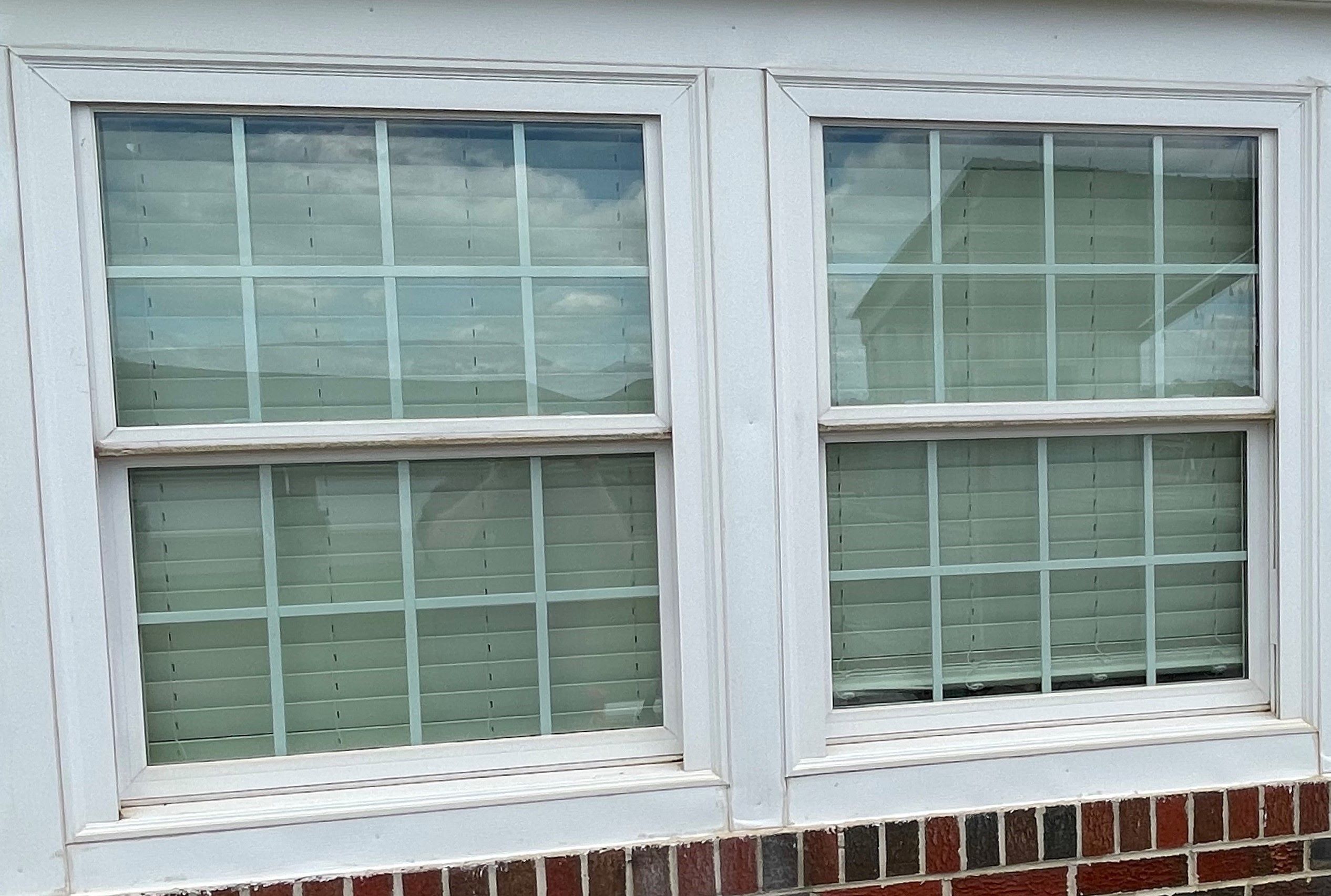The Science Behind Effective Window Cleaning
Have you ever looked out a window only to be greeted by smudges, streaks, and grime? Clean windows are vital for both homes and businesses. They enhance curb appeal, improve indoor lighting, and contribute to overall hygiene. In this blog post, we’ll explore the fascinating science behind effective window cleaning. From understanding why windows get dirty to mastering the chemistry of cleaning solutions, you’ll gain valuable insights to achieve spotless, streak-free windows effortlessly.
Understanding the Basics: How Windows Get Dirty
- Factors Contributing to Window Dirt and Grime: Ever wondered why windows seem to attract dirt like magnets? Several factors contribute to this problem. Weather plays a significant role; elements like rain, wind, and snow deposit pollutants and particles on your windows. Location matters too. Urban settings often expose windows to more pollution and dust than rural areas. Human activity also leaves its mark, from fingerprints to splashes from cooking or cleaning.
- The Role of Dust, Pollen, and Hard Water Stains: Dust is ubiquitous and settles virtually everywhere, including your windows. Pollen, particularly in spring, can coat windows in a fine yellow layer. Hard water stains occur when mineral-rich water evaporates, leaving deposits that form unsightly spots. These elements combine to obscure your view and diminish the aesthetic quality of your windows.
- The Cumulative Impact: The combined effect of these factors is a gradual buildup of grime that makes windows appear dull and dirty. Understanding these contributors helps you choose the right methods and solutions for cleaning, ensuring your windows stay cleaner longer.

The Chemistry of Cleaning: What Works and Why
Explanation of the Chemistry Involved
Window cleaning isn’t just about elbow grease; it’s a science. Different window cleaning agents contain various chemicals, each designed to tackle specific types of dirt. For instance, acidic solutions like vinegar are excellent at dissolving mineral deposits, while alkaline solutions like ammonia break down organic grime.
The Impact of pH Levels
The effectiveness of a cleaning solution often comes down to its pH level. Acidic solutions (low pH) are great for removing hard water stains, while alkaline solutions (high pH) excel at cutting through grease and organic matter. Neutral pH solutions are gentle and safe for most surfaces but may require more effort to achieve the same results.
Advantages and Disadvantages of Common Ingredients
- Vinegar: Biodegradable and effective against mineral deposits, but its strong smell can be off-putting.
- Ammonia: Excellent for cutting through grease but can be harsh and irritating to the eyes and respiratory system.
- Detergents: Versatile and generally safe but can leave residues if not rinsed properly.
By understanding the chemistry behind these ingredients, you can choose the most effective solution for your specific window cleaning needs.
Tools of the Trade: Equipment for Professional Results
Achieving sparkling clean windows is not just about the right cleaning solutions; equally important is having the right equipment. Professionals rely on an array of tools designed for efficiency and excellent results. Here are some essential tools that make window cleaning easier and more effective:
- Squeegees: A high-quality squeegee is indispensable for removing cleaning solutions and water from the glass without leaving streaks. Look for squeegees with replaceable rubber blades and ergonomic handles to ensure longevity and ease of use.
- Microfiber Cloths: Microfiber cloths are excellent for wiping and polishing windows, as they are highly absorbent and leave no lint behind. They are perfect for the final touch, ensuring a spotless finish.
- Extension Poles: For hard-to-reach windows, extension poles are a lifesaver. These adjustable poles can be fitted with squeegees or brushes, allowing you to clean high windows safely from the ground.
- Scrubbers and Sponges: Scrubbers and sponges are useful for applying cleaning solutions and scrubbing away stubborn grime. Opt for scrubbers with a built-in reservoir that dispenses cleaner, making the process more efficient.
- Buckets and Holsters: Buckets, preferably with compartments for clean and dirty water, help in effective cleaning. Holsters that attach to your belt can hold squeegees, cloths, and other small tools, keeping them readily accessible.
- Safety Gear: Safety should never be compromised, especially when dealing with high windows. Invest in sturdy ladders, safety harnesses, and gloves to ensure a secure and efficient cleaning process.
- Specialized Tools: For windows with intricate designs or hard-to-clean areas, specialized tools like corner scrubbers or detail brushes can make a significant difference. They help you clean every nook and cranny, enhancing the overall result.
By equipping yourself with the right tools, you can tackle any window cleaning task with confidence and achieve professional-grade results every time.
Technique is Key: Proper Methods for Different Types of Windows
- Guidelines for Cleaning Different Types of Windows: Different types of windows require different cleaning techniques to achieve optimal results. Double-hung windows, for instance, can be more challenging to clean due to their design, which allows both sashes to move up and down. Start by cleaning the inside panes thoroughly before moving on to the outside, ensuring you wipe in different directions to spot any missed areas. This technique helps identify streaks and ensures a more comprehensive clean.
- Special Considerations for Tinted, Frosted, or Coated Windows: Tinted windows require gentle cleaning solutions to avoid damaging the tint. It’s crucial to avoid abrasive materials that could scratch or peel the tint film. Frosted windows need a bit more care to ensure the textured surface is thoroughly cleaned. Use a soft brush to get into the nooks and crannies and a gentle cleaner to avoid damaging the frosted finish. Coated windows often have UV or reflective layers that can be damaged by harsh chemicals, so always opt for a mild solution and soft cloth. Repeated exposure to harsh chemicals can degrade these special coatings over time, reducing their effectiveness.
- General Tips for All Window Types: Regardless of the type of window, always use a soft cloth or sponge to apply the cleaning solution, and finish with a squeegee for a streak-free look. Avoid cleaning windows on sunny days, as the heat can cause the cleaning solution to dry too quickly, leaving streaks. For best results, clean windows on a cloudy day or during cooler parts of the day. Additionally, always work from top to bottom to prevent drips from landing on areas you’ve already cleaned. Using distilled water in your cleaning solution can also help prevent mineral deposits and streaks, ensuring your windows stay clearer for longer.

Safety First: Tips for Safe and Effective Window Cleaning
Window washing can be a hazardous task if proper safety measures are not adhered to. Ensuring your safety while performing the job is paramount, regardless of the height or difficulty involved. Here are essential tips to help you stay safe and achieve effective window cleaning:
- Use Proper Safety Gear: Always wear appropriate safety gear, including gloves to protect your hands from harsh chemicals and irritants, and non-slip shoes for better grip when working on ladders or slippery surfaces. If you’re working at heights, consider using a safety harness to prevent falls.
- Secure Ladders Correctly: When using a ladder, ensure it is placed on a stable, level surface. Always follow the 4-to-1 rule: for every four feet of height, place the base of the ladder one foot away from the wall. If possible, have someone hold the ladder steady while you’re on it.
- Follow Manufacturer Guidelines: Different windows and cleaning equipment have specific maintenance and usage guidelines. Read and adhere to the manufacturers’ instructions to prevent misuse that could lead to injury or damage.
- Avoid Overreaching: Overreaching from a ladder can lead to loss of balance and falls. Move the ladder as needed to ensure you can comfortably reach the areas you’re cleaning without stretching too far.
- Be Cautious with Chemicals: Handle all cleaning chemicals with care. Ensure the area is well-ventilated to prevent inhalation of fumes, and never mix cleaning agents, as this can cause dangerous reactions. Store chemicals out of reach of children and pets when not in use.
- Work in Pairs: If possible, work with a partner. This ensures there is someone to assist if you encounter difficulties and provides additional safety when handling equipment or working at heights.
- Inspect Tools Regularly: Regularly check your tools and equipment for wear and tear. Replace any damaged or worn-out tools immediately to prevent accidents and ensure optimal performance.
- Plan for Weather Conditions: Avoid cleaning windows in extreme weather conditions like strong winds, rain, or intense sunlight, which can make the task more dangerous and less effective. Choose a clear, cool day for the best results and safety.
By following these safety tips, you can make window cleaning a safer and more efficient task, ensuring both your well-being and pristine, spotless windows.
Conclusion
Window cleaning may seem like a straightforward task, but it requires the right tools, techniques, and safety measures to achieve professional-grade results. By investing in quality equipment, following proper methods for different types of windows, and prioritizing safety while cleaning, you can ensure a successful and efficient window cleaning process every time. Remember to always read manufacturer guidelines and consult with professionals if you encounter any difficulties or have specific questions about maintaining your windows’ cleanliness. With these tips in mind, you can keep your windows sparkling clean and improve the overall appearance of your home or business.
https://www.google.com/maps?cid=10983950921205194725

